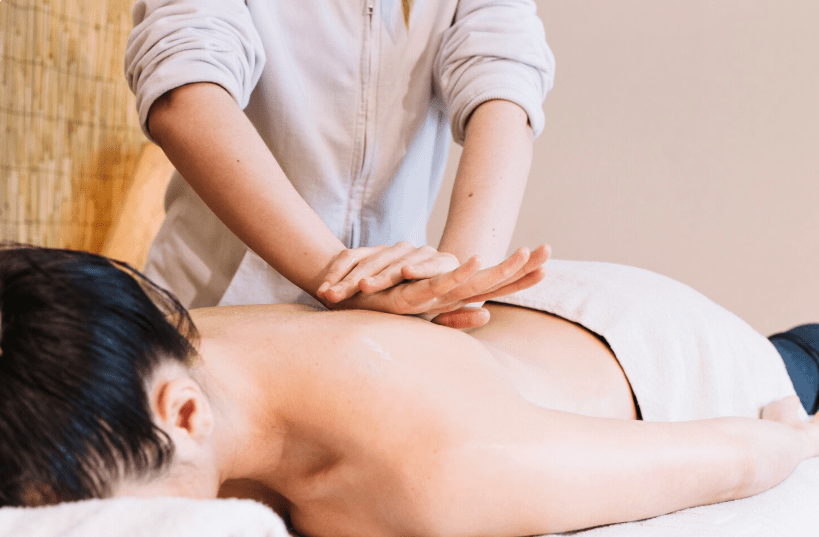Article: A Lighter You: The Science of Resetting Your Tightest Muscle

A Lighter You: The Science of Resetting Your Tightest Muscle
You’ve felt it a thousand times. That deep, familiar ache creeping up your neck and settling into a rock-hard knot on your shoulder. It’s the 3 PM slump, but instead of just feeling sleepy, your body feels heavy. You try to roll your shoulders, hearing a satisfying but concerning pop, only for the tension to snap back into place moments later. If this is your daily reality, you’re not alone. That specific pain is often your trapezius muscle—the hardworking, cape-like muscle spanning from your skull to your mid-back—sending a distress signal after hours of slouching at a desk.
As a physical therapist, I see this every day. The good news? Relief isn’t just possible; it’s a science. Let me walk you through what happens on the treatment table, explaining how simple, targeted techniques can literally convince your muscles to let go of that stress.
The Magic Starts with Knowing Hands: Acupressure Kneading
Imagine starting your session lying face down, your face nestled comfortably in a headrest. The first thing you feel isn’t brute force, but an intelligent pressure. My thumbs begin tracing the ropey line of your trapezius, starting at the base of your skull and moving outward. This isn’t random rubbing; it’s a search for the "trigger points"—those hyper-irritable knots that feel like tiny, tense peas buried in the muscle.
Using a circular kneading motion, I’m not just smoothing out tightness. Here’s the science: this technique, often called acupressure, does two things. First, the mechanical pressure increases blood flow to the area, flushing out metabolic waste products like lactic acid that accumulate from sustained poor posture. Second, the steady pressure stimulates sensory receptors in the muscle, sending a "calm down" signal to the brain that overrides the "stay tight" signal caused by stress. It’s like a gentle but firm negotiation with your nervous system.

The Deep Release: Static Fist Pressure for Stubborn Knots
Once the superficial tension begins to ease, we go deeper. For the most stubborn knots—the ones that have been your unwanted companions for months—a different approach is needed. This is where static fist pressure comes in. You might feel me make a soft fist and place the flat surface of my knuckles against your shoulder. Then, I’ll lean in, using the weight of my body, not just the strength of my arm, to apply a steady, unwavering pressure directly onto the knot.
This might feel intensely sharp for a moment, a "good hurt" that quickly gives way to a feeling of release. Why? This technique targets the muscle spindles and Golgi tendon organs—the tiny sensors that regulate muscle tension. The sustained pressure essentially tricks these sensors into telling the muscle to inhibit its own contraction. It’s a neurological reset button for your tightest muscle fibers, persuading them to finally, fully let go.

The Soothing Finale: Warm Stone Therapy to Seal the Deal
After working through the deeper layers of tension, the final act is one of pure soothing. Smooth, heated basalt stones, warmed to a perfect skin-penetrating temperature, are placed along the slope of your shoulders and upper back. The immediate sensation is one of deep, comforting warmth.
This is more than just a pleasant reward. The heat acts as a powerful vasodilator, meaning it causes your blood vessels to widen. This dramatically increases circulation, delivering a fresh supply of oxygen and nutrients to the muscles you’ve just worked on, which aids in recovery and healing. The warmth also helps to soften the fascia—the connective tissue web that surrounds your muscles—allowing everything to settle back into a more relaxed, natural state. It’s the perfect way to end the session, ensuring the relaxation isn’t just muscular, but systemic, calming your entire nervous system.

The combination of these techniques—kneading for circulation, pressure for neurological release, and heat for recovery—is what transforms a simple massage into true, lasting therapeutic relief. So the next time that nagging shoulder pain appears, remember: it’s not a life sentence. It’s a problem with a scientific, and wonderfully soothing, solution.



Leave a comment
This site is protected by hCaptcha and the hCaptcha Privacy Policy and Terms of Service apply.